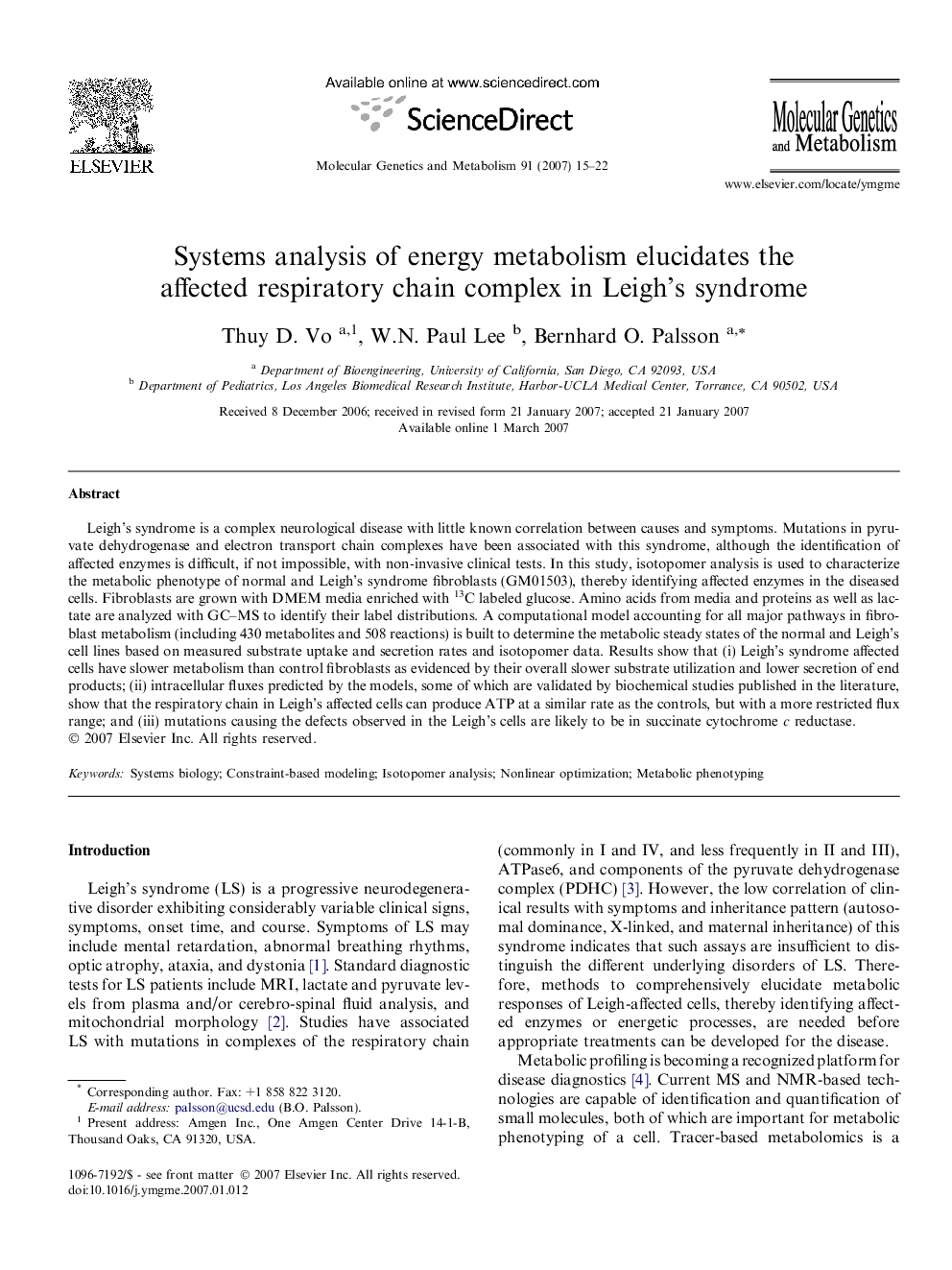| Article ID | Journal | Published Year | Pages | File Type |
|---|---|---|---|---|
| 2000121 | Molecular Genetics and Metabolism | 2007 | 8 Pages |
Leigh’s syndrome is a complex neurological disease with little known correlation between causes and symptoms. Mutations in pyruvate dehydrogenase and electron transport chain complexes have been associated with this syndrome, although the identification of affected enzymes is difficult, if not impossible, with non-invasive clinical tests. In this study, isotopomer analysis is used to characterize the metabolic phenotype of normal and Leigh’s syndrome fibroblasts (GM01503), thereby identifying affected enzymes in the diseased cells. Fibroblasts are grown with DMEM media enriched with 13C labeled glucose. Amino acids from media and proteins as well as lactate are analyzed with GC–MS to identify their label distributions. A computational model accounting for all major pathways in fibroblast metabolism (including 430 metabolites and 508 reactions) is built to determine the metabolic steady states of the normal and Leigh’s cell lines based on measured substrate uptake and secretion rates and isotopomer data. Results show that (i) Leigh’s syndrome affected cells have slower metabolism than control fibroblasts as evidenced by their overall slower substrate utilization and lower secretion of end products; (ii) intracellular fluxes predicted by the models, some of which are validated by biochemical studies published in the literature, show that the respiratory chain in Leigh’s affected cells can produce ATP at a similar rate as the controls, but with a more restricted flux range; and (iii) mutations causing the defects observed in the Leigh’s cells are likely to be in succinate cytochrome c reductase.
